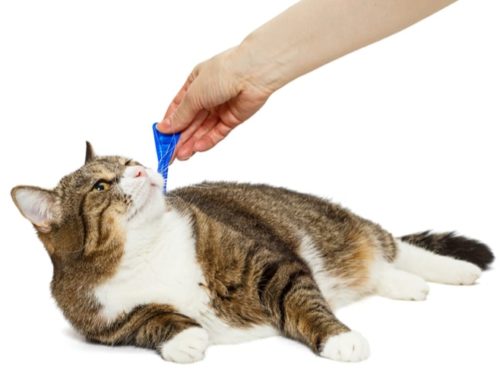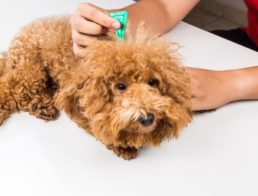Each spring, my clients ask, “How do I safely remove a tick from my dog?” Great question.
Ticks are a reality of life for most dogs at one time or another, but unfortunately, these cringe-inducing little parasites can pass very serious diseases to dogs and humans. In this article, you’ll learn how to detect and safely remove a tick from your dog.
How to Spot a Tick on Your Dog
Ticks around the U.S. and the world vary in size, shape, and color. In general, they’re approximately 2-6 mm long in the unengorged state. Engorged ticks can grow to three or more times larger.
Ticks are eight-legged parasites that have a flattened oval shape and are usually a brownish color. Once a tick has jumped onto your dog, they may attach anywhere on his body. Ticks bite through the skin in order to feed on blood.
Use your hand or a brush to push your dog’s hair against the natural direction of growth. This will allow you to spot ticks hidden under the fur. Pay close attention to hiding places between the toes, inside the ears, and in skin folds.

Steps to Safely Remove a Tick from Your Dog
Remove all ticks immediately. Applying Vaseline, nail polish or dish soap to the tick in an attempt to make it detach may not work. Leaving the tick attached longer means a higher chance of disease transmission.
You will need:
- A good light and possibly a magnifying glass
- Tick removal tool or fine tweezers to grasp the tick
- Jar of soapy water with a lid to kill ticks
- Soap and water to clean dog’s skin
- Triple antibiotic ointment
The process:
- Examine the tick to see if the head is visible or buried in the skin. Is the tick’s body is small and flat, or is it engorged? Removing a tick with a deeply buried head and an engorged body requires a more careful approach.
- Use water or rubbing alcohol to wet any long fur, then push it to one side. Make sure you have good lighting on the area in question. I like to use a magnifying glass with a built-in light to see what I’m doing.
- You will need an instrument to firmly grasp the tick. There are specially made tick-removal tools that work well for this job. Follow the directions that came with the product for best results. If you have ongoing tick problems, a small investment in this tool makes sense.
- If you don’t have a tick-removal tool, a good pair of fine tweezers or hemostats will work. Grasp the tick’s head as close to the dog’s skin as possible. If the tick is embedded in the dog’s skin, grasp the tick’s body as close to the skin as possible. Be gentle to avoid tearing the tick before it’s completely removed.
- Engorged ticks: be careful not to burst the body with pressure from your instrument. This could make it more difficult to remove the entire tick. Fine-tipped tweezers work well for engorged tick removal since you can vary the pressure applied.
- Gently and steadily pull the tick in a perpendicular direction away from the dog’s skin. The goal is to pull the head/mouth out from the skin without tearing it away from the tick’s body. This may take 20 to 60 seconds, so be patient!
- Inspect the removed tick to see if you’ve removed the head.
- Drop the tick into a jar of soapy water and tightly cover the jar to prevent the tick from crawling out. It will drown in the liquid and can then be disposed of without risking re-infestation.
- Wash the dog’s skin in the area of attachment thoroughly with mild soap and water. Apply a thin film of a triple antibiotic such as Neosporin to the area, twice a day for 7 days.
What Happens If the Tick’s Head Stays In?
If the tick you removed doesn’t have a head attached, it’s probably still buried in the dog’s skin. Leaving a tick head embedded in a dog’s skin is not dangerous. However, it may cause minor localized inflammation.
Do not attempt to “dig out” the tick’s head–it will cause more inflammation than it’s worth. Watch the area for irritation over the next few days. The dog’s body will naturally expel the remaining tick parts within a few weeks. Seek help from your veterinarian if significant inflammation occurs in the area.
Prevent Future Tick Bites
Prevent future tick bites on your dog by using one of the safe and effective products available either over the counter or from your veterinarian. My favorite old standbys contain fipronil. Frontline Plus and Parastar are spot-on products that control ticks in dogs. Natural products like Wondercide spray are not as strong but can still be helpful in controlling ticks.
For more tick spray options, read our list of the best tick sprays.
Keep weeds and shrubs cut short around your home and inspect your dog for ticks after walking in woods and fields. If your house or yard has a heavy tick infestation, enlist the help of a professional exterminator for environmental treatment.
Featured Image Credit: “Mardi Growl” cc by 2.0 by scott spaeth




























